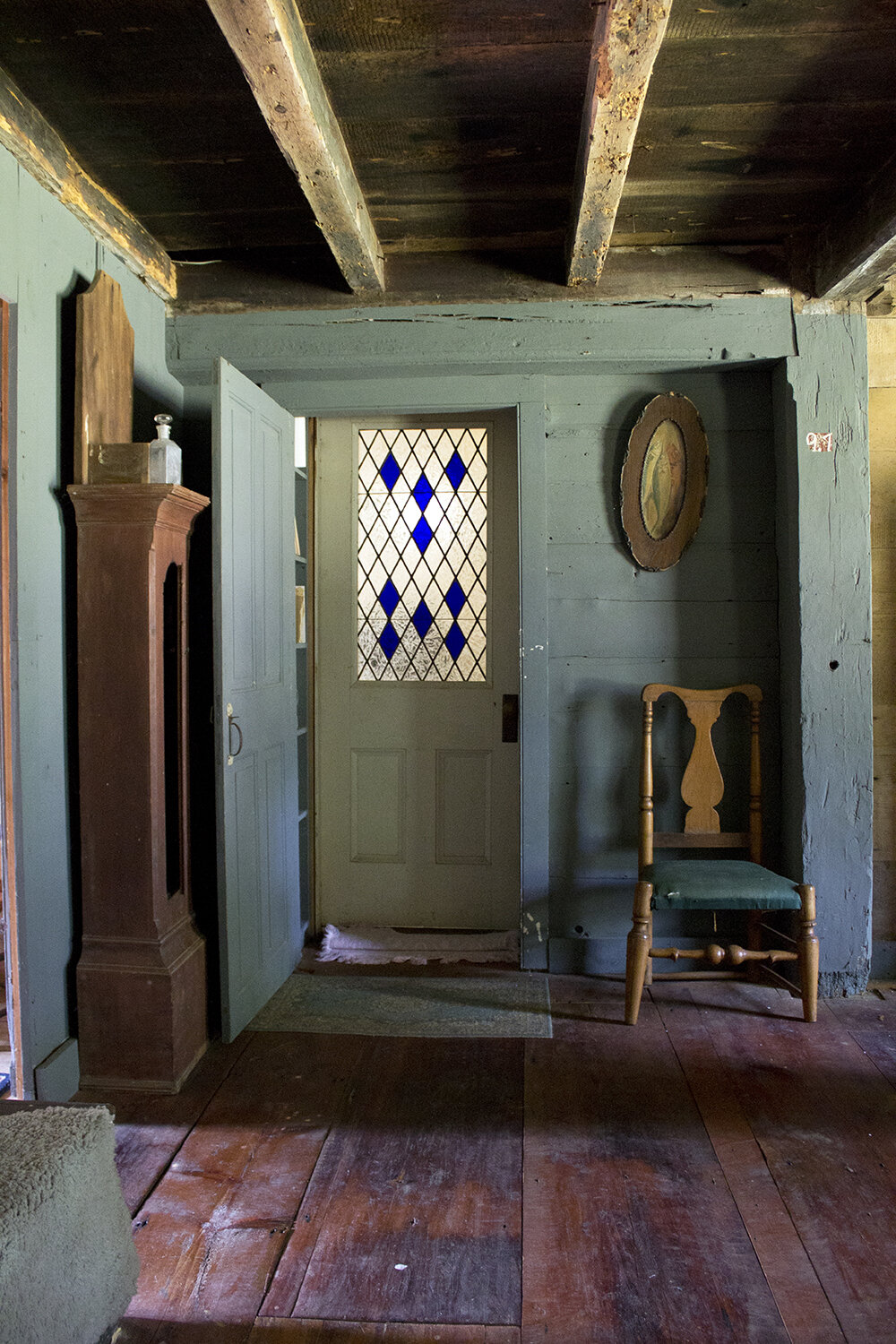KYLE MARSHALL'S AMERICANA
By Lisa Zeiger
“To be rooted is perhaps the most important and least recognized need of the human soul,”
—Simone Weil
The Terry-Mulford House
This review is special to me, for the writer of Americana is Kyle Marshall, a cherished and esteemed mentor half my age. The arrangement of our friendship is singular: I am Kyle’s grammarian; he is my guardian. To paraphrase Muriel Spark’s character, schoolmistress Miss Jean Brodie, Kyle possesses an old head on young shoulders. He has an unusual predilection for seeking out the experience of his elders, not always wisely.
Sagtikos Manor
Kyle is a specimen of Henry James’s “superlative American” reflexively respectful of the antique, whether person, place, or thing. Not all old things are good, but in choosing to exhibit the beauties of old Long Island houses to an audience wider than their immediate, rather insular milieu, Kyle has chosen well. For Americana is not only the history of an aesthetic, but an author’s delicate excavation of his own roots. He does not pull them up, but reveals to the reader the astonishing polymorphism of their trees and flowers.
Sagtikos Manor
When Kyle first told me he was naming his book Americana, I was appalled. But as he writes,
“Americana is a porous word. Like the country itself, it permits a number of disparate, even conflicting cultural elements to shelter beneath the same roof. It is unpretentious, for it absorbs camp lore and mid-twentieth-century signage as easily as fine eighteenth-century antiques. This unique quality, which often seems a nostalgic contradiction to the prejudiced eye, is in fact an elegant art that weaves together the serious and the frivolous—that is to say, the dominant strands of the human condition.”
My own eye, when it comes to decoration, is dead-serious, and certainly prejudiced against the artifacts of my own nation. I have never felt at home under the American roof Kyle praises, looking always to Europe’s gables and mansards as a lost fortification. I pretend America isn’t here at all; I lie back and think of England. Kyle, in his book and in his person has done much to ameliorate my antipathy.
The beauty of Americana is that it glances at lore and kitsch but in the end glosses over them, not with French polish but with the hardy, homemade materials forged by Dutch and English settlers: handmade bricks, long wood shingles, honest plaster walls, and windows still wavy with handmade glass. These elements survive in Long Island houses to this day, treasured by careful inheritors who understand that the houses they live in were, for the most part, not built to a grand, unified design, but are like striations in the earth itself; each new wing, each porch, each outbuilding, each shack or lean-to a pricelessly humble trace of the evolving needs of households and families dating back to the mid-seventeenth century.
I have always observed that truly great interiors are made not in one fell swoop of design, but through slow accretion, endless rearranging and sudden visions, and surprisingly often, through obsession with a particular talismanic object. The architectural envelopes of Long Island seem to follow a similarly indirect, idiosyncratic process, in which a plan emerges from a mighty maze but does not precede it. Necessity rather than untethered aestheticism gives rise to inventions more aesthetically pleasing than features designed only to please.
William Miller puts it beautifully in his Foreword:
“We live in a house...formed as an irregular pearl around a room from 1660 and added onto layer upon iridescent layer to form a luminous whole.”
Point Place
I daresay the Miller compound is not only the proverbial pearl of great price—i.e. entry to the heaven that is home—but one of mysterious excrescences and asymmetries. Kyle Marshall captures such harmonious oddity of Long Island houses in both prose and photographs that are as intimate as they are descriptive. A reticent person, Kyle begins this book about houses in the language of memoir:
“My earliest memories are the scents of a childhood near Long Island Sound, of sweet honeysuckle and beech rose, pungent low tide, and wet dirt roads,”
And a memoir it is, of place and belonging and the longing for permanence. The very fluidity of building on Long Island in the last 400 years assures its preservation in a world of forced adaptation sped up into madness.
Rock Hall
As a wanderer, I am drawn to Kyle’s peculiarly American steadfastness, a 19th century virtue we are losing. He is Henry James’s The American, Christopher Newman, fascinated, even seduced, but never gone missing in the intrigues of Europe.
The phrase, “to know one’s place” has a punishing, hierarchical meaning. But applied to Kyle’s paean to Long Island Sound, it is something like a benediction.
______________________________
Americana: Farmhouses and Manors of Long Island by Kyle Marshall is published by Schiffer, 2019.




